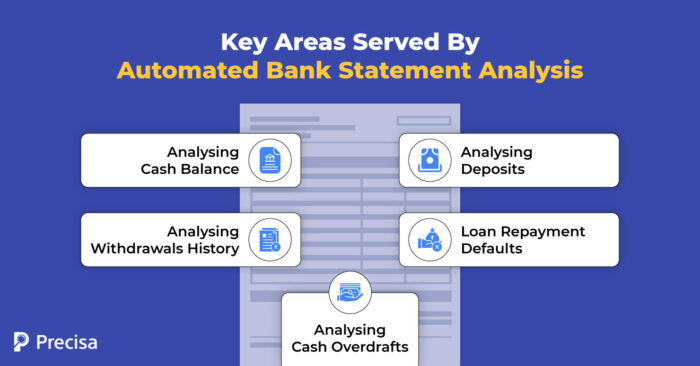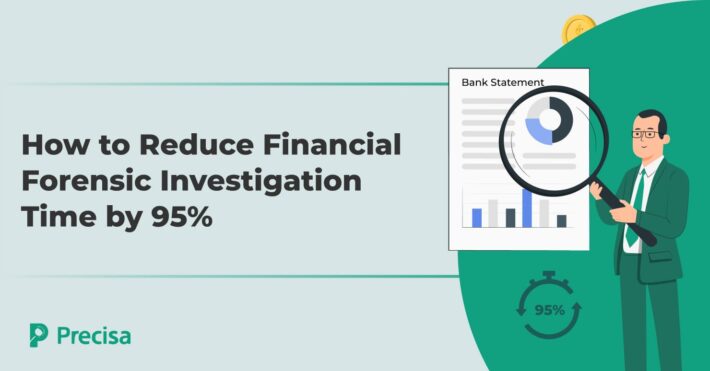Can Bank Statement Analysis Help in Managing Lending Risks?

Digital lending is considered to be one of the fastest-growing verticals in the Fintech space.
In India, for instance, digital lending grew from a market value of $ 9 billion in 2012 to $ 350 billion by 2023.
As the scale and speed of lending grows, so does the proportion of risk.
Lenders are susceptible to several business risks. These include growth of non-performing assets (NPAs), exposure to loan fraud, and rising expenditure due to non-efficient operations, especially as lenders scale.
One of the top solutions to reducing risk is to assess risk accurately, efficiently, and speedily. For instance, the adoption of cloud-based, AI-automated bank statement analysis is helping lenders strengthen the risk assessment function, and drive revenues and profitability.
In this blog, we delve into the specific areas where comprehensive, in-depth bank statement analysis can help lenders transform their risk management operations.
What Is Bank Statement Analysis?
Lending businesses are continually vulnerable to risk when making underwriting decisions. Betting on borrowers who can successfully repay a loan is critical for reducing costs and driving revenues and profitability.
The process of bank statement analysis enables them to review all financial transactions of a borrower and conclude how they are placed financially.
However, lenders have faced key challenges when using purely human interventions in decision-making, especially as they scale quickly.
This is where access to cloud-based, automated AI-powered bank statement analysis software can help lenders transform underwriting functions. They can bring accuracy, efficiency, and speed to the analysis process.
Lenders can feed a borrower’s financial data into the software and expect a comprehensive report of the borrower’s financial status. Based on all the data – from revenues and withdrawals data to bounced cheques – the software computes a creditworthiness score, which enables lenders to make data-driven decisions.
Forward-thinking lenders are adopting such solutions and accelerating business growth.
Key Areas Served By Automated Bank Statement Analysis
Here is a snapshot of how bank statement analysis can help lenders get a comprehensive of a borrower’s finances:
1. Analysing a Borrower’s Cash Balance
A cash balance is an indication of the value of funds accessible to a business at any given moment in time in their bank account. A positive cash balance offers a positive indication that a borrower has the potential to make repayments due to positive financial habits.
On the other hand, a low cash balance indicates that a business does not have access to any excess funds, which can signal poor habits. A low cash balance can result in a borrower being penalised by their bank for not maintaining the minimum balance, as well as the potential of bounced EMI cheques due to a lack of funds to repay the loan.
However, a low cash balance does not mean that the borrower is not earning revenues. A borrower can earn high revenues yet mismanage funds by overspending or not adopting an optimal financial management system.
2. Analysing Deposits
Bank statement analysis software can isolate all cash inflows and segregate them efficiently into sub-categories such as revenues, dividend income, and bank deposit interest, among others.
Lenders can get a real idea of the revenues generated by a business borrower to understand the cash flows of the business. Suppose, the last deposit was made several months back, this indicates a lack of monthly revenue. In turn, this reality indicates a potential to default on EMI payments in the future.
On the other hand, if the deposits analysis indicates regular monthly deposits, this indicates a healthy cash flow. A business is more likely to make EMI payments on time in this scenario.
Superior bank statement analysis software also facilitates cross-analysis of revenue deposits with Goods & Service Tax Returns (GSTR) data. Lenders can cross-check the authenticity of revenue data and make data-driven underwriting decisions.
3. Analysing Withdrawals History
A thorough bank statement analysis can help lenders segregate all withdrawals and categorise them into specific tabs such as salaries, office expenditures, and existing loan repayments. Some borrowers may fail to disclose liabilities such as credit card debt or outstanding loans to banks and other lenders.
Automated, AI-powered sequestration of data, such as recurring payments of a specific amount or an unfixed amount to specific bank accounts, can reveal potential liabilities. It can also flag fund withdrawals directed to undisclosed private bank accounts.
Access to such information can also help lenders get a more accurate picture of a borrower’s financials.
4. Flagging Bounced Cheques/ Loan Repayment Defaults
A history of bouncing cheques and defaults on previous loan repayments paints a negative picture of a borrower’s financial habits. Bounced cheques indicate an inability to honour payments to vendors and partner businesses.
On the other hand, loan repayment defaults can be on existing business loans. Superior bank statement analysis software has the capability to identify both types of events, which reflect penalty payments or direct deductions from accounts in bank statements.
These transactions are segregated, and lenders can view them in one report. Too many bounced cheques and loan defaults reduce the overall creditworthiness score of a borrower.
5. Analysing Cash Overdrafts
Current accounts usually come with an overdraft facility, a facility that enables business account holders to withdraw funds over and above the fund balance in their accounts. This is a valuable facility, especially in a crisis.
Leveraging the overdraft facility every now and then is considered normal. However, if a borrower uses this facility as a go-to for raising funds, it can be considered a red flag by lenders.
Bank analysis software can isolate overdraft cases so lenders have transparency on these occurrences. Overdependence on overdrafts can reflect a reduced potential for borrowers to pay back loans, hence reducing creditworthiness.
The Takeaway
Strengthening the risk management function is a critical step towards sustainable growth for lenders today. As the lending landscape gets more crowded and businesses attempt to scale, they must reduce the potential for growth of non-performing assets and load fraud.
Leveraging superior bank statement analysis software can help lending teams make accurate, efficient underwriting decisions and manage risk effectively.
Presica’s comprehensive and seamless financial data analysis solution simplifies and speeds up the process through automation. The software provides actionable insights on a customisable dashboard, thus helping companies make informed business decisions.
Request a free demo today!




